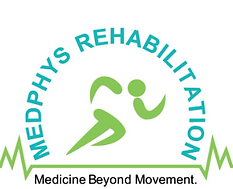Understanding Multiple Sclerosis: The Role of Exercise in Managing the Condition
Multiple sclerosis (MS) is a chronic disease that affects the central nervous system, disrupting communication between the brain and the body. This complex condition can lead to a range of physical and cognitive symptoms that significantly impact the daily lives of those affected. As we explore MS, it’s essential to highlight the critical role that exercise plays in its management.

What is Multiple Sclerosis?
MS is an autoimmune disorder where the immune system mistakenly attacks the myelin sheath—the protective covering of nerve fibres. This can result in symptoms such as fatigue, muscle weakness, balance issues, and cognitive changes. The National Multiple Sclerosis Society (2023) provides an overview of the various types of MS, including Relapsing-Remitting MS and Primary Progressive MS, each presenting unique challenges for individuals.
Types of Multiple Sclerosis
There are several forms of MS, including:
- Relapsing-Remitting MS (RRMS): Characterized by episodes of symptom flare-ups followed by recovery.
- Secondary Progressive MS (SPMS): Initially starts as RRMS but progresses to a steady decline.
- Primary Progressive MS (PPMS): Involves gradual worsening from the onset without distinct relapses.
- Progressive-Relapsing MS (PRMS): A rare type with continuous progression and occasional relapses.
The Importance of Exercise for Individuals with MS
Exercise is a cornerstone in managing MS and can have profound benefits that extend well beyond physical fitness. Engaging in regular physical activity offers a range of advantages for those living with MS.
1. Enhancing Physical Function
Regular exercise can improve mobility, strength, and overall physical function. Research indicates that individuals with MS who engage in exercise show significant improvements in muscle strength and endurance (Kalb et al., 2020). This can lead to better performance in daily activities and an enhanced quality of life.
2. Reducing Fatigue
Fatigue is one of the most debilitating symptoms of MS. Interestingly, studies have shown that regular physical activity can actually help reduce fatigue levels. A systematic review by Pilutti et al. (2013) found that exercise training is associated with significant reductions in fatigue among individuals with MS, thereby improving their overall well-being.
3. Improving Balance and Coordination
Individuals with MS often experience balance issues, increasing the risk of falls. Exercise programs that include balance training can enhance stability and coordination. According to Motl and Pilutti (2012), tailored exercise interventions can lead to improvements in balance, thus reducing fall risk.
4. Boosting Mental Health
While the primary focus is on physical benefits, it’s worth noting that exercise can also positively affect mental health. Engaging in regular physical activity can reduce symptoms of anxiety and depression, common in individuals with MS (Latimer-Cheung et al., 2013). The sense of achievement from sticking to an exercise routine can foster a more positive outlook.
5. Fostering a Supportive Community
Group exercise classes can provide a supportive environment, allowing individuals with MS to connect with others facing similar challenges. This sense of community can be incredibly motivating and beneficial for mental well-being.
6. Promoting Overall Health
Staying active is essential for overall health. Regular exercise reduces the risk of additional chronic diseases, such as obesity and cardiovascular disease, which can further complicate MS management (Moore et al., 2016).
Tailoring Exercise Programs
It’s vital for individuals with MS to work with healthcare professionals, like exercise physiologists or physiotherapists, to create customized exercise plans. These programs should focus on:
- Safety: Ensuring that exercises are safe and suitable for each individual’s condition.
- Adaptability: Modifying routines based on daily energy levels and symptoms.
- Variety: Incorporating different types of exercise—strength training, aerobic activities, and flexibility exercises—to keep things engaging.
Conclusion
Understanding multiple sclerosis and recognizing the importance of exercise empowers individuals to take charge of their health. Regular physical activity can enhance physical function, manage symptoms, and improve overall quality of life for those with MS.
If you or someone you know is navigating the challenges of MS, consider signing up for personalized support at MedPhys Rehabilitation. Our experienced team is dedicated to helping you create a tailored exercise plan that meets your unique needs. Remember, every step counts on the path to a healthier, more active future.
References
- National Multiple Sclerosis Society. (2023). Multiple Sclerosis Overview.
- Multiple Sclerosis Australia. (2023). Living with MS.
- Kalb, R., et al. (2020). Exercise and multiple sclerosis: The benefits beyond muscle strength. Journal of Neurology, Neurosurgery & Psychiatry.
- Klaren, R.E., Motl, R.W., Dlugonski, D., Sandroff, B.M., & Pilutti, L.A. (2013). Objectively quantified physical activity in persons with multiple sclerosis. Archives of Physical Medicine and Rehabilitation, 94(12), 2342–2348.
- Motl, R.W., & Pilutti, L.A. (2012). The benefits of exercise training in multiple sclerosis. Nature Reviews Neurology, 8(9), 487–497.
- Pilutti, L.A., Platta, M.E., Motl, R.W., & Latimer-Cheung, A.E. (2014). The safety of exercise training in multiple sclerosis: A systematic review. Journal of Neurological Sciences, 343(1–2), 3–7.
- Moore, G., Durstine, J.L., & Painter, P. (2016). ACSM’s Exercise Management for Persons With Chronic Diseases and Disabilities, 4E. Human Kinetics.
- Latimer-Cheung, A.E., Pilutti, L.A., Hicks, A.L., Martin Ginis, K.A., Fenuta, A., & Mackibbon, K.A. (2013). The effects of exercise training on fitness, mobility, fatigue, and health-related quality of life among adults with multiple sclerosis: A systematic review to inform guideline development. Archives of Physical Medicine and Rehabilitation, 94(9), 1800–1828.
- Weikert, M., Dlugonski, D., Balantrapu, S., & Motl, R.W. (2011). Most common types of physical activity self-selected by people with multiple sclerosis. International Journal of MS Care, 13(1), 16–20.

